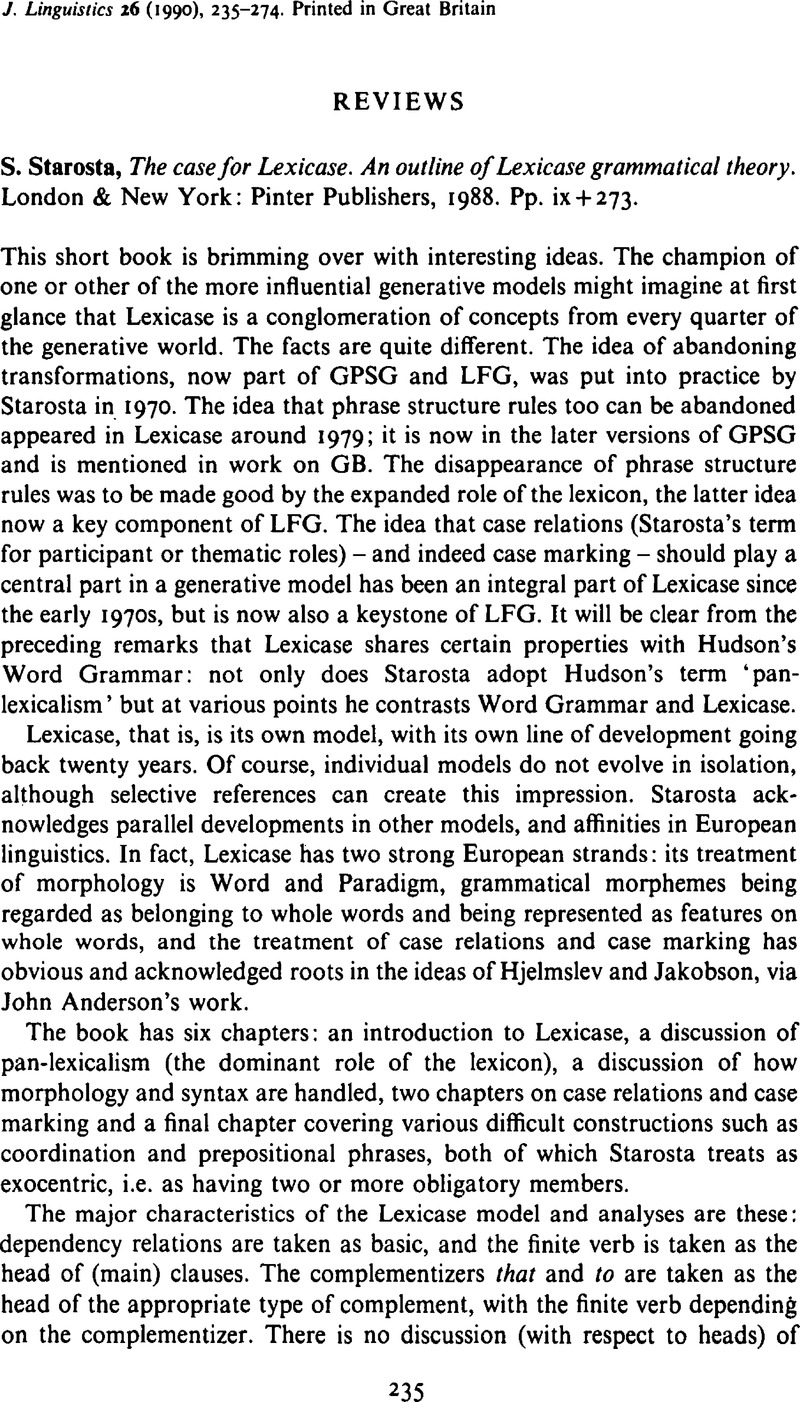No CrossRef data available.
Article contents
S. Starosta, The case for Lexicase. An outline of Lexicase grammatical theory. London & New York: Pinter Publishers, 1988. Pp. ix + 273.
Review products
S. Starosta, The case for Lexicase. An outline of Lexicase grammatical theory. London & New York: Pinter Publishers, 1988. Pp. ix + 273.
Published online by Cambridge University Press: 28 November 2008
Abstract
An abstract is not available for this content so a preview has been provided. Please use the Get access link above for information on how to access this content.

- Type
- Reviews
- Information
- Copyright
- Copyright © Cambridge University Press 1990
References
REFERENCES
Fillmore, C. J. (1968). The case for case. In Bach, E. & Harms, R. T. (eds), Universals in linguistic theory. New York: Holt, Rinehart & Winston. 1–90.Google Scholar
Foley, W. A. & van Valin, R. D. (1984). Functional syntax and universal grammar. Cambridge: CUP.Google Scholar
Jackendoff, R. S. (1975). Morphological and semantic regularities in the lexicon. Lg 51. 639–671.Google Scholar
Jakobson, R. (1936). Beitrag zur allgemeinen Kasuslehre: Gesamtbedeutungen der russischen Kasus. TCLP 6. 240–283.Google Scholar
Langacker, R. W. (1987). Foundations of cognitive grammar. Vol. I: Theoretical prerequisites. Stanford: Stanford University Press.Google Scholar
Moravscik, E. (1978). Case marking of objects. In Greenberg, J. (ed.) Universals of Human Language, 4: Syntax. Stanford: Stanford University Press. 249–289.Google Scholar
Quirk, R., Greenbaum, S., Leech, G. & Svartvik, J. (1985). A comprehensive grammar of English. London: Longman.Google Scholar
Schlesinger, I. M. (1979). Cognitive structure and semantic deep structures: the case of the instrumental. JL 15. 307–324.Google Scholar
Tchekhoff, C. (1978). Aux fondements de la syntaxe: l'ergatif. Paris: Presses Universitaires de France.Google Scholar


